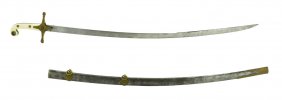- Joined
- May 9, 2012
- Messages
- 174
Since the Renaissance, swords seem to have become more specialized for one purpose or another, with side swords being a single handed arming sword with a more developed hilt, and that hilt giving more point control and precision, you get the rapier which is very well suited for thrusting, while still retaining an ability to cut.
On the other side of that, sabers have become more and more popular for military use. Swinging a weapon feels more intuitive and more natural, and as such sabers are very specialized cutters. And a closer quarters version of that, the cutlass, is very well suited to that as well.
But what do you like more, what do you think is better overall, and why?
On the other side of that, sabers have become more and more popular for military use. Swinging a weapon feels more intuitive and more natural, and as such sabers are very specialized cutters. And a closer quarters version of that, the cutlass, is very well suited to that as well.
But what do you like more, what do you think is better overall, and why?



